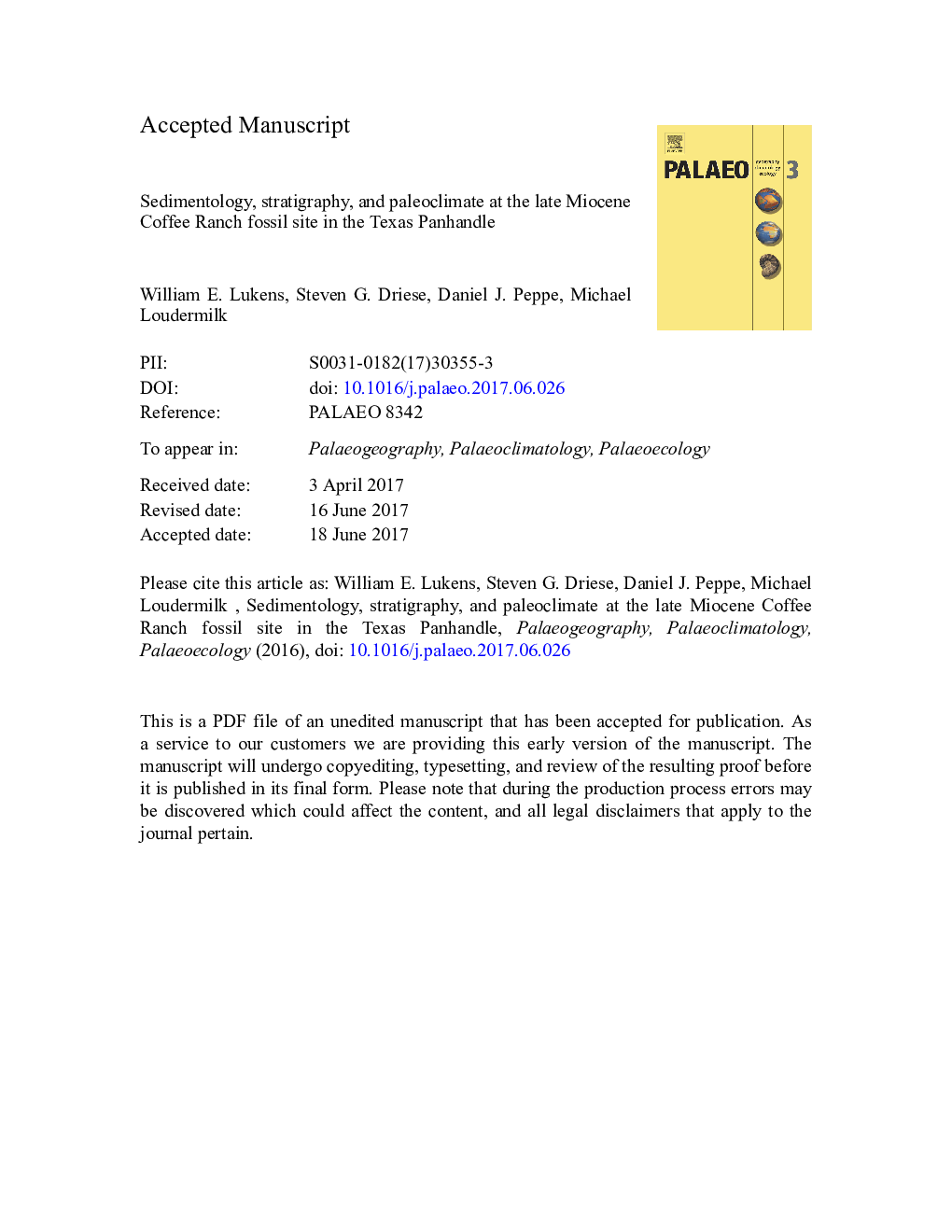| کد مقاله | کد نشریه | سال انتشار | مقاله انگلیسی | نسخه تمام متن |
|---|---|---|---|---|
| 8868665 | 1622107 | 2017 | 58 صفحه PDF | دانلود رایگان |
عنوان انگلیسی مقاله ISI
Sedimentology, stratigraphy, and paleoclimate at the late Miocene Coffee Ranch fossil site in the Texas Panhandle
ترجمه فارسی عنوان
رسوب شناسی، چینه شناسی و پائولوکلیماس در محل فسیلی مکانیک قهوه مایکنی در تگزاس پانندل
دانلود مقاله + سفارش ترجمه
دانلود مقاله ISI انگلیسی
رایگان برای ایرانیان
موضوعات مرتبط
مهندسی و علوم پایه
علوم زمین و سیارات
فرآیندهای سطح زمین
چکیده انگلیسی
The late Miocene Coffee Ranch fossil assemblage contains some of the earliest evidence of C4 herbivory in North America. However, little is known regarding the environmental setting associated with the fauna, and a general lack of detailed paleoclimate data exists for the late Miocene from the North American continental interior. In this study, the sedimentary environments, stratigraphy, geochronology, and paleoclimate are interpreted for a series of outcrops of the late Miocene Ogallala Formation in the Texas Panhandle that includes the Coffee Ranch locality. Updated magnetostratigraphy coupled with previously published geochronology indicates that all exposed strata were deposited over a ~Â 277Â kyr interval within chron C3An.2n from ~Â 6.42-6.70Â Ma. Depositional environments include fluvial channels, floodplain ponds, floodplain paleosols, eolian paleosols, riverine tufa, and reworked volcanic ash. Trunk and tributary fluvial channels are differentiated using channel dimensions, sedimentary structures, and bounding surface architecture, and indicate seasonally-variable discharge. Paleosols from nine pedofacies are described and preserve a spectrum of weakly developed Entisols and weakly to moderately mature Inceptisols and Vertisols. Constitutive mass-balance calculations reveal that mature paleosols formed along distinct pedogenic pathways. Calcic Vertisols accumulated pedogenic carbonate and exhibited either net volumetric dilation or collapse as a result of mineral weathering. In contrast, non-calcic Vertisols show patterns of decalcification and variable degrees of volumetric dilation and collapse. The presence of the paleosols described in this study requires paleoprecipitation between of 900-1150Â mm/yr-approximately double modern values-and a westward shift of the continental udic-ustic soil moisture boundary by ~Â 400Â km during the late Miocene. This finding suggests that climates in the southern midcontinent were not sufficiently arid to select for C4 photosynthetic pathways over C3 photosynthesis in the late Miocene.
ناشر
Database: Elsevier - ScienceDirect (ساینس دایرکت)
Journal: Palaeogeography, Palaeoclimatology, Palaeoecology - Volume 485, 1 November 2017, Pages 361-376
Journal: Palaeogeography, Palaeoclimatology, Palaeoecology - Volume 485, 1 November 2017, Pages 361-376
نویسندگان
William E. Lukens, Steven G. Driese, Daniel J. Peppe, Michael Loudermilk,
